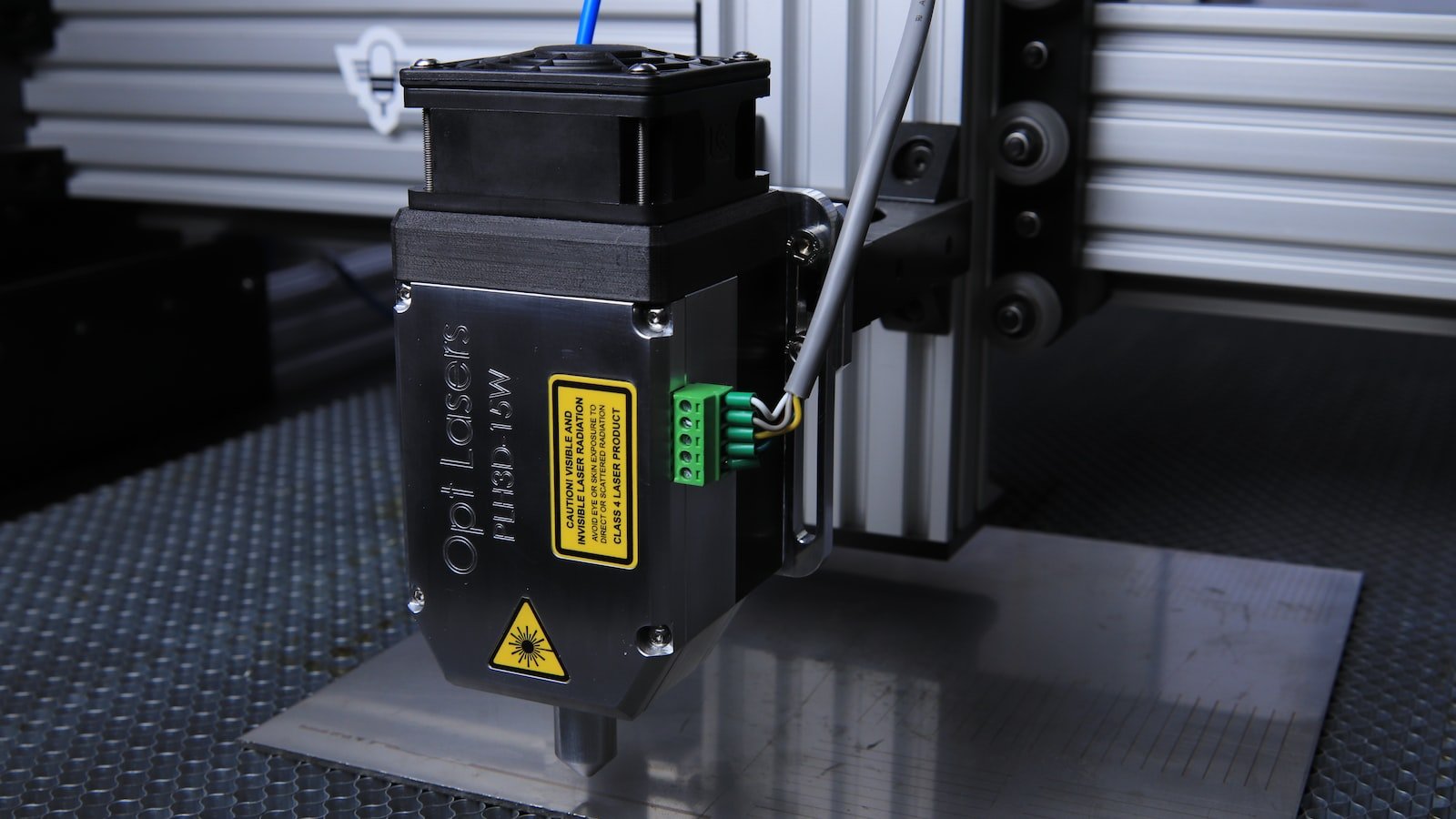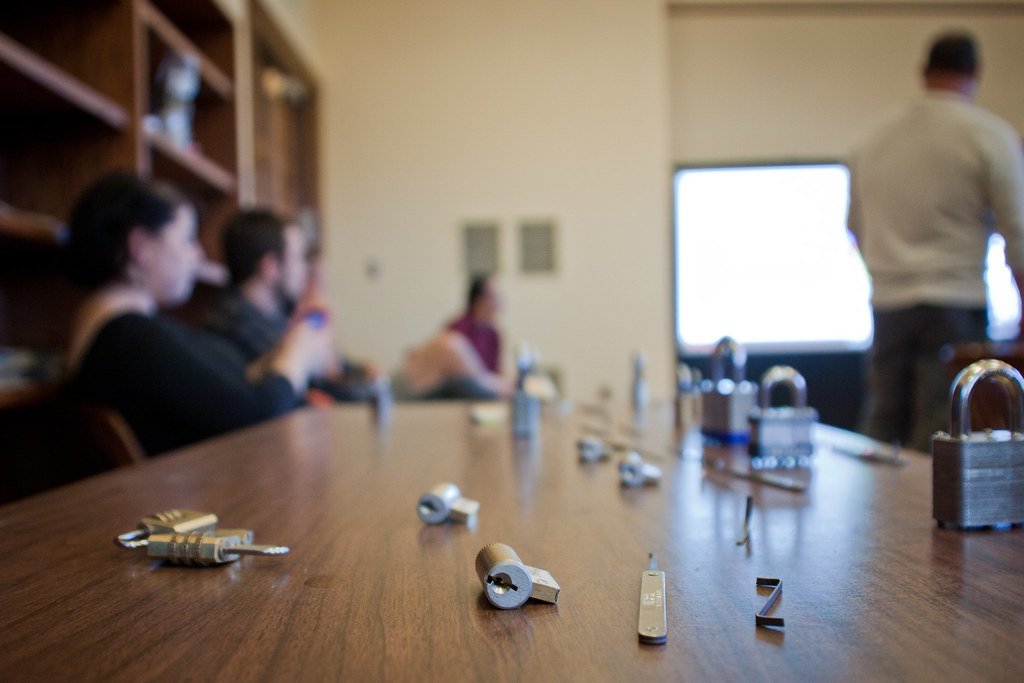Have you ever been captivated by the craft of locks and their intricate mechanisms? Do you find yourself clicking your pen incessantly just to fathom the satisfying click of a lock tumbling into place? If you answered yes to any of these questions, then you, my curious friend, have stumbled upon the perfect article. Imagine a world where you can not only unlock the secrets of locks but also pass on your newfound knowledge to others. From picking to decoding, from bypassing to impressioning, here we embark on a journey to create a DIY locksport curriculum that will unlock the key to teaching this fascinating art form to aspiring locksmiths and bonafide enthusiasts alike. Welcome to the realm of locksport education, where the locks become our canvas, and the tools our brushes. Let the adventure begin!
Table of Contents
- Designing an Engaging and Comprehensive DIY Locksport Curriculum
- Exploring the Fundamental Principles of Lock Picking
- Guiding Students through Progressive Skill Levels in Locksport
- Integrating Theory and Practice: Teaching Locksmithing Techniques
- Promoting Ethical Locksport: Emphasizing Legal and Responsible Usage
- Q&A
- The Conclusion

Designing an Engaging and Comprehensive DIY Locksport Curriculum
An engaging and comprehensive DIY Locksport curriculum can open the doors to an exciting world of locksmithing and security exploration. Unlock your potential and delve into the art of lock picking and lock manipulation. This curriculum aims to provide aspiring lock enthusiasts with a structured learning experience, combining theoretical knowledge and practical skills.
Curriculum Components:
- Lock Basics: Gain a deep understanding of the different types of locks, their components, and how they function. Learn about the various lock mechanisms, such as pin tumbler locks, wafer locks, and disc detainer locks.
- Tools of the Trade: Discover the essential tools used by lockpickers, from tension wrenches to various lock picks and key extractors. Understand the purpose of each tool and how to use them effectively.
- Techniques and Methods: Explore the fascinating world of lock manipulation through a variety of techniques. From single-pin picking to raking and bumping, master the art of unlocking different types of locks.
- Ethics and Legalities: Understand the importance of responsible locksport practice and the ethical boundaries that should be respected. Learn about the legal implications surrounding the use of lockpicking skills and how to use them responsibly.
- Challenge Builds: Engage in hands-on projects, where you’ll have the opportunity to assemble and disassemble locks, creating custom challenges to test and enhance your skills.
- Community Interaction: Connect with fellow locksport enthusiasts through online forums, local meetups, and workshops. Share experiences, seek advice, and contribute to the vibrant locksport community.
By following this engaging DIY Locksport curriculum, you’ll embark on a journey of exploration and mastery. Unravel the secrets of locks, sharpen your skills, and unlock a new passion for the world of locksmithing.

Exploring the Fundamental Principles of Lock Picking
Lock picking, the art of bypassing mechanical locks without the original key, has captivated the imagination of curious minds for centuries. A blend of skill, patience, and precise technique, lock picking is both a practical skill for locksmiths and security professionals and a fascinating hobby for enthusiasts. In order to delve into the intriguing world of lock picking, it’s essential to understand the fundamental principles that underpin this craft.
First and foremost, a key factor in successful lock picking is a thorough understanding of lock components. From the outer casing to the intricate pin tumblers and springs within, every aspect plays a role in determining lock security. Recognizing the anatomy of a lock enables pickers to discern vulnerabilities and exploit them efficiently.
- Single Pin Picking: The cornerstone of lock picking, this technique involves manipulating the individual pins within the lock cylinder to align them at the shear line, allowing for a smooth rotation. Precise control and a delicate touch are crucial.
- Raking: A more straightforward method that utilizes a rake pick to rapidly jostle multiple pins at once. This technique relies on a lighter touch and a bit of luck, as it is less precise but can be faster.
- Impressioning: A lesser-known approach, impressioning involves making a key by creating physical impressions on a key blank. By inserting and manipulating the blank in the lock, the marks left behind indicate the correct pin heights.
Delving into the fascinating realm of lock picking offers enthusiasts a unique opportunity to unravel the mysteries of security systems and develop a deep appreciation for the craftsmanship of locks. Remember, though, that lock picking should always be practiced legally and ethically. It is a valuable skill that fosters a greater understanding of security and can contribute to improving it.

Guiding Students through Progressive Skill Levels in Locksport
Locksport is a unique and engaging hobby that allows individuals to explore the intricate world of locks and keys. At our progressive skills workshop, we take great pride in guiding students through various skill levels, ensuring they have a solid foundation before challenging them further.
Our workshop is designed to be inclusive, welcoming beginners and experienced lock enthusiasts alike. We believe in exploring the art of locksport holistically, focusing not only on the technical aspects but also on the ethical considerations surrounding this field. We emphasize responsible and legal use of lock picking skills, promoting ethical standards within the locksport community.
Throughout our program, students will embark on a journey of discovery that gradually unfolds their lock picking abilities. Here’s a glimpse of the skill levels we offer:
- Level 1: Basic Techniques – Students are introduced to the fundamentals of locks, keys, and picking tools. They learn essential techniques like single-pin picking and basic tension control.
- Level 2: Intermediate Proficiency – Building upon the basics, students advance their skills by mastering more complex lock mechanisms. They acquire expertise in techniques such as raking and rocking, enhancing their understanding of tension and feedback.
- Level 3: Advanced Mastery – At this stage, students tackle highly intricate locks using advanced techniques like decoding and bumping. They further refine their skills through precision and finesse, learning to read subtle cues from locks to improve their success rate.
Our certified instructors provide one-on-one guidance, allowing students to progress at their own pace. We foster a collaborative learning environment, where students can exchange ideas and actively engage in hands-on exercises. With each skill level achieved, students will gain a deeper appreciation for the artistry and craftsmanship that goes into the design of locks.
Join us at our progressive skills workshop and unlock your potential in the captivating world of locksport!

Integrating Theory and Practice: Teaching Locksmithing Techniques
In the fascinating world of locksmithing, mastering theoretical knowledge is just as vital as acquiring practical skills. To ensure a comprehensive education for aspiring locksmiths, our curriculum emphasizes the integration of both theory and practice. By striking the perfect balance between classroom learning and hands-on experience, we provide our students with a holistic understanding of the locksmithing craft.
Key aspects of our integrated approach include:
- Interactive Lectures: Our expert instructors begin each session with engaging lectures that delve into the essential principles and theories of locksmithing. From the history of locks to the intricacies of key cutting, students gain in-depth theoretical knowledge to form a solid foundation.
- Practical Workshops: Putting theory into practice, we conduct regular workshops that allow students to apply their knowledge in a real locksmithing environment. Through hands-on exercises such as lock picking, key duplication, and safe manipulation, learners develop crucial technical skills and problem-solving abilities.
- Case Studies: To bridge the gap between theory and real-world scenarios, our curriculum incorporates extensive case studies. Students analyze complex lock systems, discern vulnerabilities, and brainstorm effective strategies to overcome security challenges. This practical approach not only enhances their critical thinking but also cultivates their creativity in devising innovative solutions.
By integrating theory and practice, we empower our locksmithing students to become well-rounded professionals who are equipped to tackle the ever-evolving challenges in the industry. Through a comprehensive curriculum and hands-on learning opportunities, we ensure that our graduates possess the knowledge, skills, and confidence to excel in their locksmithing careers.
Promoting Ethical Locksport: Emphasizing Legal and Responsible Usage
Locksport, the art and sport of picking locks, has gained popularity over the years, captivating enthusiasts with its fascinating blend of technical skill and problem-solving. However, it is important to promote ethical Locksport, which encompasses legal and responsible usage. By emphasizing these principles, we can ensure that Locksport remains a respectable and valuable activity in our society.
Promoting legal usage involves reminding lock pickers to always obtain proper authorization before attempting to pick any lock. This includes obtaining permission from the owner of the lock or participating in organized events or competitions where lock picking is sanctioned. By adhering to legal guidelines, we can demonstrate that Locksport is a legitimate pursuit that upholds ethical standards.
Responsibility is another crucial aspect of ethical Locksport. It is essential to emphasize the importance of respecting others’ property and privacy. Lock pickers should always be mindful of the ethical boundaries and never engage in any activities that can potentially cause harm or invade someone’s privacy. Responsible Locksport also encourages lock pickers to share knowledge, skills, and resources with others, fostering a supportive and inclusive community.
In order to promote ethical Locksport effectively, we can:
– Provide educational resources that outline the legalities and ethical responsibilities involved in Locksport.
– Organize workshops or webinars where experienced lock pickers can share their insights on responsible lock picking techniques and best practices.
– Collaborate with local law enforcement agencies to establish a positive relationship and seek their guidance on promoting ethical Locksport within the community.
– Establish a code of conduct or set of ethical guidelines within lock picking organizations to ensure that ethical principles are upheld by all members.
By promoting ethical Locksport, we can showcase the positive aspects of this unique hobby, encourage responsible participation, and foster a community that values legality, respect, and responsibility. Together, we can shape the future of Locksport as an invaluable educational and recreational pursuit.
Q&A
What is locksport?
Locksport is a hobby or sport that involves the study and practice of manipulating locks. It encourages individuals to learn about the inner workings of locks and develop skills in lock picking and other forms of lock manipulation.
Why create a DIY locksport curriculum?
Creating a DIY locksport curriculum allows enthusiasts to have a structured and progressive approach to learning lock picking skills at their own pace. It provides a sense of achievement and helps individuals track their progress as they move from simple to more complex lock mechanisms.
How do I start creating a locksport curriculum?
To create a locksport curriculum, begin by organizing the various lock picking techniques and principles into different skill levels. Designate beginner, intermediate, and advanced stages, ensuring that each level builds upon the skills acquired in the previous stage. This will provide a clear pathway for learners to progress in their locksport journey.
What are some essential skills to include in a DIY locksport curriculum?
A comprehensive locksport curriculum should include foundational skills such as single-pin picking, rake picking, and basic lock manipulation techniques. Additionally, it should cover topics like security pins, bypass techniques, and impressioning to provide a well-rounded understanding of locksport.
Are there any recommended resources for a DIY locksport curriculum?
Yes, there are several resources available for DIY locksport curriculum development. Books like “The Visual Guide to Lock Picking” by Mark McCloud and “Practical Lock Picking” by Deviant Ollam are great starting points. Online lock picking forums and YouTube channels also offer valuable tutorials and insights shared by the locksport community.
Is locksport legal?
Locksport is a legal hobby in many countries as long as it is practiced responsibly and within the confines of the law. It is important to engage in locksport activities only with locks that you own, have permission to pick, or are explicitly designed for educational purposes.
Are there any ethical guidelines to follow when teaching locksport?
When teaching locksport, it is crucial to emphasize the ethical aspects of the hobby. This means promoting responsible and lawful lock manipulation, discouraging any malicious intent or illegal activities. Teaching and practicing locksport should always be done with the utmost respect for the rights and privacy of others.
The Conclusion
And there you have it, a comprehensive guide to creating your very own DIY Locksport curriculum! From understanding the basics of locks and picking techniques to cultivating a sense of wonder and curiosity, this curriculum is designed to unlock the hidden potential of every budding locksmith.
As you embark on this unique journey, remember that this curriculum is merely a starting point. Allow your creativity to flow and adapt the lessons to suit the needs and interests of your learners. Whether you’re a passionate parent looking to bond with your child over a shared interest, an educator seeking to inspire young minds, or an individual yearning to explore this fascinating world on your own, the possibilities are endless.
As you introduce the world of Locksport to your students, encourage them to embrace the challenges and setbacks that may arise. Remind them that picking locks is not just about overcoming physical barriers, but also fostering patience, concentration, and problem-solving skills.
So gather your tools, create an environment of trust and safety, and dive into the realm of Locksport. As your students navigate through various locks, they will develop a profound understanding of mechanics and gain confidence in their ability to conquer any obstacle that presents itself.
Remember, the aim is not to encourage illicit activities or promote unethical behaviors, but to instill a sense of responsibility and promote an ethical approach to the art of Locksport. Emphasize the importance of using their skills solely for legal purposes and emphasize the respect for others’ properties and privacy.
In the end, this curriculum is not just about turning locks, but about unlocking doors to imagination, exploration, and personal growth. So go forth and empower yourself and others with the knowledge and skills of Locksport, and watch as the world around you unveils its secrets, one lock at a time!
As an affiliate, my content may feature links to products I personally use and recommend. By taking action, like subscribing or making a purchase, you’ll be supporting my work and fueling my taco cravings at the same time. Win-win, right?
Want to read more? Check out our Affiliate Disclosure page.